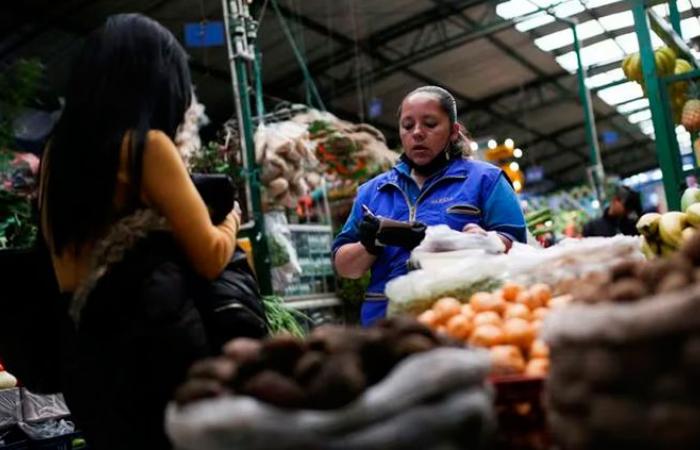
The Bank of the Republic, according to the latest projections, will only achieve its medium-term inflation goal until 2026. The entity estimates inflation of 5.7% for this year, a decrease to 4.3% in 2025 and will reach 3 .9% in 2026, which will ultimately approach the Issuer’s target range of between 2% and 4%, with an average of 3%.
During a recent conference in Cartagena, central bank manager Leonardo Villar indicated that in 2024 the inflation goal established for the country will not be reached either. The official highlighted the economic efforts, but assured that the projections will not be met this year due to the current behavior of the market.
“The expectations of the market and the technical team of the Bank of the Republic coincide in forecasting inflation around 5.5% at the end of this year, still above our goal of 3%. This implies why 2024 will be the fourth consecutive year in which we do not meet the inflation goal,” said the expert.
Throughout this year, according to data reported by the National Administrative Department of Statistics (Dane), the inflation rate showed a downward trend, although not as quickly as expected by the markets and the Government. In the latest results for May, for example, this stood at 7.16% year-on-year, the same figure as April. In addition, it was evident that goods, which represent a relevant segment in the total basket, registered a drop of 1.83%, favored by weak demand and the dissipation of supply shocks. However, food, affected by a low statistical base and the impact of the El Niño phenomenon, accelerated again, with an increase of 1.40% to reach 4.43% annually.
What happens with the rents?
The adjustment in rents influenced by inflation in 2023 explains the slow decline, since it shows a variation of only 0.07% until reaching 7.95% annually. The regulated ones, although they presented new positive data, remain high, with a fall of 0.85% to 13.73% annually, supported by the high prices of public service bills and the cost of gasoline.
Researchers at the Bank of the Republic consider that this result was predictable and predict that disinflation will continue in the coming months, reaffirming their forecast of 5.7% for December 2024.
Basket Containment
The services sector also reflects a high indexation, which makes it difficult to reduce inflation in this area and is presented as the main challenge for containing the total basket. In May, the monthly advance in services was 0.62%, although lower than the reference for the same month in 2023, but still high compared to the historical average of 0.30% for May between 2010 and 2023.
This translated into a minimum reduction of 0.07% in the annual metric, which went from 8.02% in April to 7.95% in May.
Within services, rentals, which represent 50% of this item, remain the main determinant behind the slow decline, experiencing the largest increase recorded so far in the 21st century, due to the adjustment of the fee to high inflation. of 2023.
Tolls, EPS fees and education
Among other products that contributed to inflation are stability in tolls, moderating EPS fees and a slight monthly increase of 0.01% in secondary education.
As things stand, the annual balance remains at double-digit levels due to persistent, although moderate, pressures derived from electricity bills at 18.35% annually and fuel prices at 29.14% annually. With Infobae





